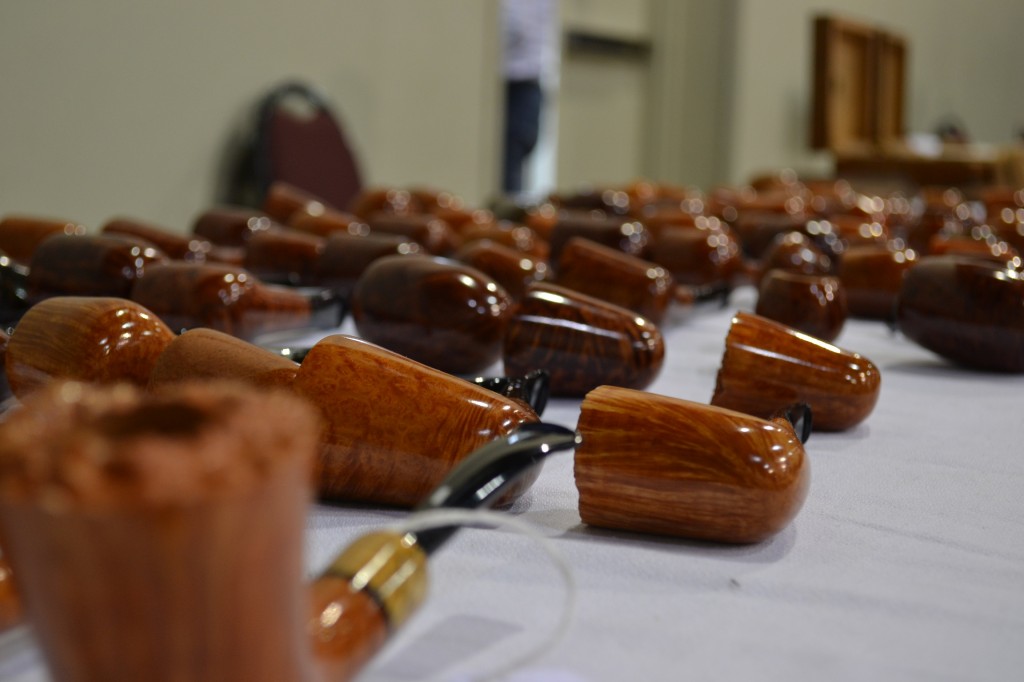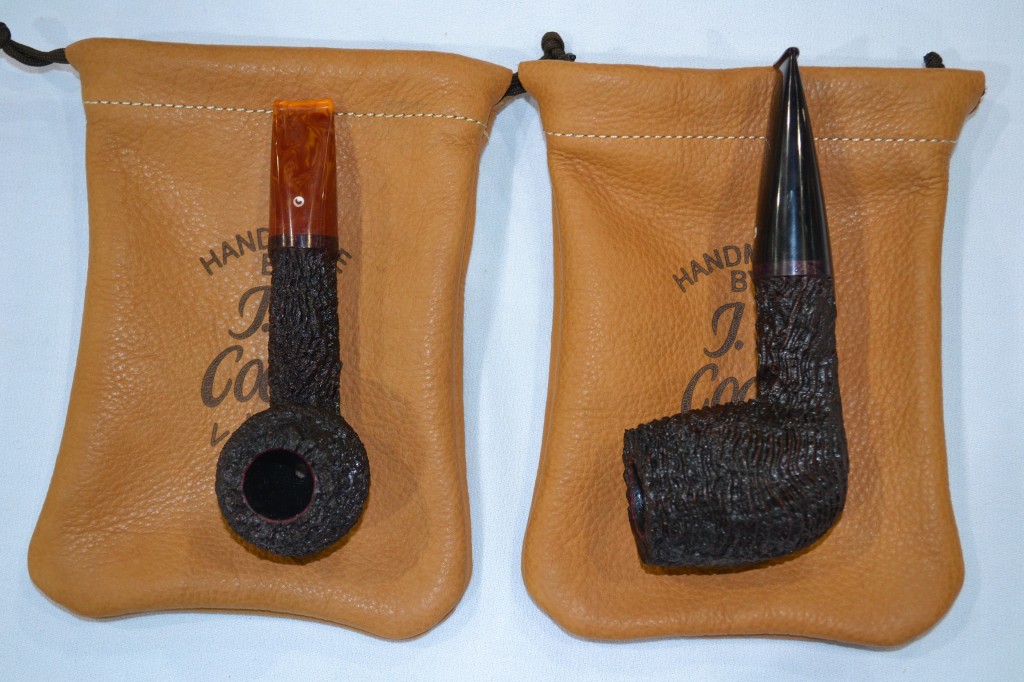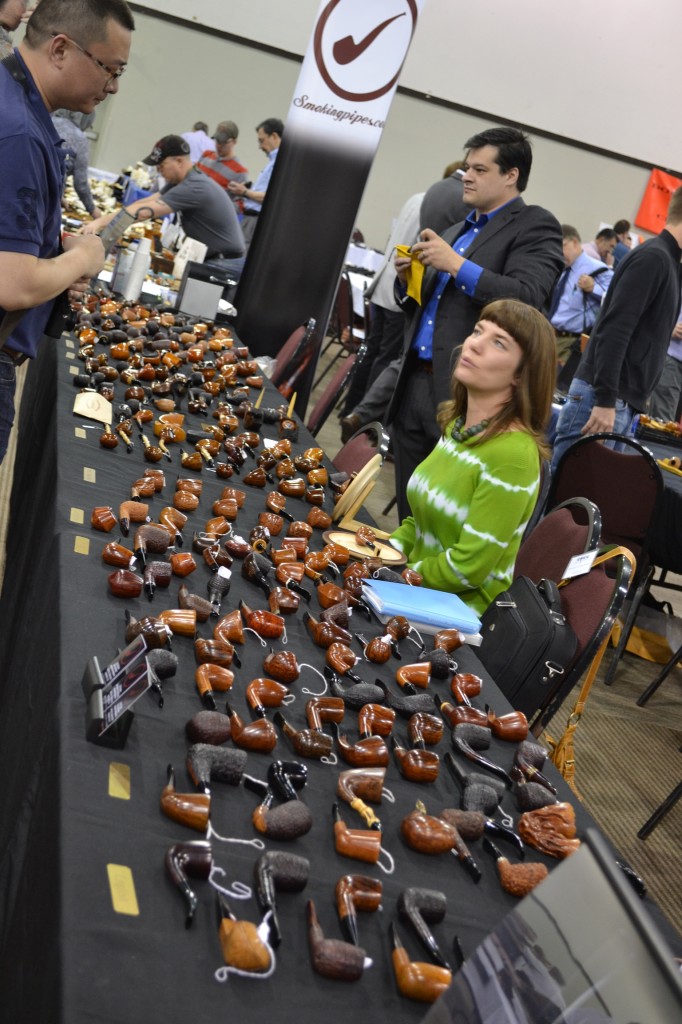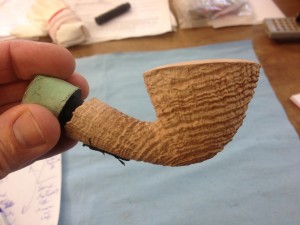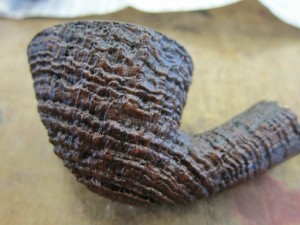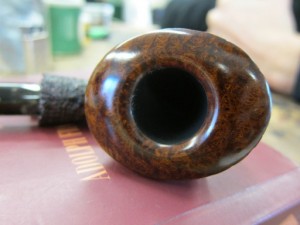The article below is a reprint from my personal website. When I wrote it back in 2005 I was still relatively new to pipe smoking and couldn’t find much information about aging tobacco. Even after all these years the article is still relevant — and it the variety and divergence of opinions is quite amusing, if not disconcerting.
IS THERE A “BEST BEFORE” ON TOBACCO?
I’ve always heard stories of some lucky person finding a dusty, 20-year-old tin of their favourite tobacco tucked away in the back of a drugstore somewhere. These aged tobaccos are purported to be absolutely wonderful to smoke. So, needless to say, I blithely stocked up on several dozen tins of various tobaccos… until one day I came across some information on the Dan Pipe website recommending that tobacco be kept from only 1-3 years.
Oh, dear.
EXPERTS AGREE… OR NOT
With this kind of conflicting information I wrote to several people in the pipe and tobacco industry asking their opinion. Stephan Sales, of Brigham Pipes, wrote, “Do not believe everything that you read. I recently found some tins tucked away on the back of a shelf that were from 1964 … and found the tobacco to be perfectly humidified and extremely well aged.”
Craig Tarler of Cornell and Diehl tended to side with Dan Pipe, writing, “Pretty good advice except that you can keep English blends a lot longer. Some store them for over 10 years. I tend to believe they peak at about five years and then age slowly after that.”
AND WHAT DID OTHER PEOPLE THINK?
A gentleman from Samuel Gawith gave an unofficial guess (“But don’t quote me!”) that if the tobacco is in a properly sealed tin, and cellared in the correct conditions, that it should keep for about 2 years with no great detoriation in the smoke.
Patrick Blatter, one of the brothers of Blatter and Blatter in Montreal wrote, “The aromatic tobaccos, for the most part, contain natural sweetening agents and cannot be kept for more than a 1 1/2 to 2 years.”
Greg Pease was more optimistic, writing, “It seems that most any tobacco will do just fine for 5 years or so, perhaps even 10, providing they are kept in hermetically sealed containers.”
So how can all these confusing and often contradictory opinions be explained? The first step is to understand what happens when tobacco ages. On his web-site, master blender Greg Pease explains that, “Aging tobacco is all about the delicate, complex dance of life in a microbial ecosystem.” In other words, while the tobacco remains sealed in its original tin, a fermentation process will take place over time, slowing with age.
NOT ALL TOBACCO AGES THE SAME
How well tobacco ages also depends largely on the tobacco itself. Let’s look at the three different categories and two opinions on them:
Virginias
Greg Pease: Generally, any tobacco with plenty of natural sugars will age wonderfully. Virginias, especially those with perique, will age for longer than any of us will, it seems.
Dan Pipe: The flavours will change due to fermentation processes — tobaccos get milder, smoother with more full-bodied character; flake tobaccos (some blended with Perique) may also get stronger.
English Blends
Greg Pease: English blends seem to fare less well, though 20 years appears safe for just about anything.
Dan Pipe: Natural leaf mixtures in the “English style” (with Latakia) … can well be stored for 2 or 3 years.
Aromatic Blends
Greg Pease: It’s depends on how aromatic the Virginias are. Three Nuns, I am quite convinced, has a top note added, and it doesn’t hurt it in the least. However, even sauced tobaccos won’t go “bad” over the period of a few years. The stuff just may not age properly.
Dan Pipe: With Black Cavendish serving as the flavour carrying base the aroma additions are most probably affected and often decomposed by the fermentation process and may change or even spoil the mixture’s original flavour.
YOUR BEST CHOICES FOR AGING
At the conservative end it’s suggested that tobacco, especially aromatics, could be at risk after a mere year of storage. Yet, interestingly, very few companies actually date their tobaccos. It’s anyone’s guess how long your one-year-old tin of tobacco really is: It’s not a stretch for a tin to have been sitting at the manufacturer and then a retail store for a year or two even before you bought it. The most optimistic viewpoint gives these aromatic tobaccos from several to countless years all depending on the blend. Overall, the only thing one can safely say is that these aren’t the best choices for cellaring, but should be able to withstand at least a couple of years on your shelf without much harm.
For long-term aging, the general consensus is that Virginias and English blends are the better choices, though even here the opinions vary from 2 to over 20 years. With all this information I’m sure it’s as clear as mud how long you should keep your products. In the end, it’s up to your own personal experiences and, well—guessing—as to how long to keep your tobacco around!
HOW TO CELLAR
Lastly, the easiest part of all: storing the tobacco for the long haul. First of all, it should be noted the opening of a tin will end the natural fermentation process—and it will not begin again. Likewise, pouched tobacco will not age properly since the packaging is not a perfectly sealed environment. That means that sealed, unopened tins are the only ones to bother aging. These need only be stored in cool, dry and dark place to keep the containers as safe from corrosion and large temperature changes as possible! Once open, your best bet is to keep it moist and smoke it quickly: It will slowly lose its flavours and properties much more rapidly.




